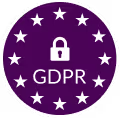Diversity Management
Diversity management is the pathway to empowering diversity and inclusion in the workplace–something that is becoming ever more important in our society. As more and more companies embrace multi-layered DEI programs, their application is also becoming more complicated. To make these transformations go more smoothly, many are finding that coaches are an effective way to deliver diversity training and monitoring.
What Is Diversity Management?
Diversity management is the official policy taken on by an organization to promote diversity in its workforce. Historically, many companies preferred to hire people of a certain ethnicity, sexual orientation, race, and so on.
The inequalities that this caused are now unacceptable. Today’s workers prefer DEI-friendly policies that include an employee community made up of people from diverse backgrounds. A diversity management program oversees these efforts so that a wide mix of people are hired, nurtured, and promoted.
However, a diverse workforce is only one aspect of bringing social justice into the organization. According to the concept of DEIB:
- Diversity brings a multitude of different people into the workplace.
- Equity allows all of them to participate and be heard on an equal level.
- Inclusion ensures that all employees, particularly managers, invite diverse employees to participate.
- Belonging is how diverse employees feel about inclusivity in the workplace.
Each of these layers plays a role in order for diversity management programs to be effective.
Different Types of Diversity Management
From the viewpoint of a DEI manager, there are two essential settings for diversity initiatives:
National Workforces
There are some organizations that only have national branches and some diversity managers who are only responsible for local operations. In this case, diversity managers and employees are much more likely to understand the national social justice scene.
For instance, in the United States during the 2020 George Floyd protests, black employees were under particular pressure. It was common at that time for companies and employees – on their own initiative – to display symbols of solidarity.
International Workforces
The job of diversity management is much more difficult with international employees. This can be an issue both when workers are in different physical locations, and when an organization hires new immigrants.
In this setting, diversity managers must consider differences in:
- Language
- Laws
- Religion
- Educational standards
- The status of women and minorities
- Political views
- Work ethics
To be truly successful in such an environment, a diversity manager needs extensive cultural training for their geographical area of responsibility.
Diversity Management Strategies and Best Practices
Diversity is a concept that only works when it is deployed throughout an organization; naturally, it requires a well-thought-out strategy. Your diversity management initiatives should cover three areas of best practices:
Managers
C-level employees must approve of diversity projects and provide resources for them. But it’s mainly up to managers to make sure that retention campaigns, performance reports, and even organizational culture all factor in diversity concepts.
Employees
It’s on the “floor” where diversity affects the largest number of people, so employees need to be tuned in as well. To get the ball rolling, HR should run DEI training courses at all levels, check that diversity policies are being followed by workers, and continuously strive to uncover and eliminate bias.
The Human Resources Department
This is the main address for DEIB training and issues. It is up to HR to get leadership on board, ensure that recruiting efforts include diversity quotas, and implement relevant training for the entire workforce.
L&D Programs for Diversity
This last requirement is especially important because of the multi-level challenge of meeting DEIB goals. For example, “belonging” is a major factor for HR teams to get right as it depends on how an individual employee feels. Similarly, non-privileged workers might have skill gaps because they lack educational opportunities. For reasons like these, you’ll have disadvantaged employees who don’t have the skills that they need to move up the corporate ladder, which is a big problem for inclusion goals.
On the other hand, your privileged workers are probably unaware of the many workplace challenges faced by underrepresented groups. Overcoming this barrier is a matter of culture change, difficult conversations, and education.
The key to all of this is learning and development. Smart organizations know that continuous learning is essential for success, and frequent DEI programming is part of this. Within the category of L&D, there are also specific types of learning that promote DEI awareness and achievement.
Leadership Skills
According to Forbes, “creating a culture of DEI starts with leadership”. Many of the abilities that support good leadership in general, such as empathy, will be of essential value to DEI programs as well. Note that, by “leader”, we don’t just mean someone who sits at the top of a hierarchy. A leader is also someone who:
- Takes initiative
- Helps others
- Has the courage to speak up when something is wrong
That in itself sounds like a vital part of a DEI program. True leaders in a DEI environment will have the cultural competence to understand the diverse people around them. But they will also step in to support those who are disadvantaged and confront those who have not accepted the full range of diversity concepts.
Conflict Management
Dealing with workplace disagreements and tension is a natural consequence of DEI programs. Those with privilege will often not want to give up their advantages, which creates a challenge for managers. But there are many times when conflict occurs and a manager is not available as a witness or to deal with the consequences. So employees of all types need the tools that enable them to deal with privileged employees, reduce tensions, and produce a positive outcome.
L&D programs for conflict management often look at different styles of dealing with tension, ranging from simply demanding an end to the argument to trying to accommodate both sides. Every employee tends to gravitate towards a particular style. The goal of an L&D program is to expand an employee’s abilities through trying new kinds of conflict management.
Communication
Just as leadership skills serve dual roles for both general management and the promotion of DEI, so too does communication find a critical place in the two areas. Communication is a complex skill that covers many bases: written, spoken, involving peers, directed at superiors, etc. But it is also a way of simply getting to know someone. Establishing a rapport with coworkers is great for team building, but it is also a necessary activity for learning about each other.
When employees have strong interpersonal communication skills, it’s easier for them to understand the unique challenges faced by diverse populations. It also allows them to avoid misunderstandings and listen to various opinions. For those who are disadvantaged, communication allows them to feel more comfortable about speaking out and gives them the tools to explain their unique situations.
Why Should HR & L&D Professionals Care About Diversity Management?
No matter what stance you take on diversity initiatives, they are becoming as essential today as any other HR/L&D function.
Demographics
Younger generations see diversity as an important aspect of their work environment, so attracting and retaining them depends, in part, on the diversity situation at your company. These demographic groups are also very good at spreading the word about organizations that don’t meet their expectations, so to protect your brand, you should definitely be thinking about diversity.
Hiring for diversity is simply inevitable. For example, seven of the United States are “majority minority” where less than 50% of the population is composed of non-Hispanic whites. Similarly, people identifying as LGBTQ+ in the United States has reached 7.6% across the population, while this figure increases to 20% for Gen Z adults. As these numbers are expected to grow, companies will encounter many more job applicants and employees who require a more widespread approach to diversity and inclusion.
Reporting
Diversity is also becoming a reporting requirement. In the United States, many companies must submit documents that describe certain DEIB metrics. This includes the Diversity Assessment Report that is required by all companies regulated by the SEC and the Equal Employment Opportunity Report for US companies that have more than 100 workers.
One area that is affecting even more companies is that of sustainability reporting, which covers an organization’s policies on the environment, social standards, and governance (ESG). Of particular interest to diversity managers is the social standards component of ESG. Companies must describe their commitments and accomplishments related to their own workforce, workers in the value chain, affected communities, and end-users.
Benefits
Not everything in diversity management is about responsibilities. Companies also enjoy a wide number of benefits when embracing DEIB programs. Here are just a few such advantages:
- Decision-making. Within a diverse population, you are bound to find many styles of thinking. This can be based on individual abilities or from a cultural influence. In any case, teams composed of diverse people consider decisions in a variety of ways, leading to an improvement in the quality of decision-making. Gartner found that 75% of organizations with diverse decision-making teams and inclusive company cultures exceed financial targets.
- Creativity. Many people from underrepresented communities have experienced hardship. This quality often enables them to see things from a point of view that is different from privileged people. Their unique stance can lead to different sorts of problem-solving and a more creative approach to challenges.
- Productivity. The end result of improved decision-making and creativity is a boost for your bottom line. Gartner found that diverse organizations see a performance from their employees that is 12% higher compared to non-diverse companies. For HR, on top of the benefits that you’ll obtain from L&D programs focusing on productivity, diversity can be your secret competitive weapon. The result is an all-around win. Employees will enjoy working in an environment that promotes social justice while executives will welcome increased efficiency.
- HR functions. It’s true that DEIB is a goal within itself for many HR teams, but it also has ripple effects. For example, employees with a high level of job satisfaction due to improved conditions and opportunities from DEIB programs will tend to stay longer with their organization. Similarly, companies that become known for good DEI performance will have an easier time attracting talent. This is even more true when it comes to recruiting a diverse range of employees, leading to a kind of “snowball effect” for all the benefits of good diversity management.
How to Manage Diversity at Work
The basic goal of a diversity program is to integrate a variety of people into the workforce. For somebody managing DEI, this requires three steps:
Hire According to Diversity Goals
This means a transformation of the entire hiring process. You need to eliminate bias from interviewers, job descriptions, and evaluation processes. Hiring panels need to be composed of diverse people. It’s also important to source staffing resources that specialize in certain DEI groups, such as those for women and people of color.
Encourage Acceptance of Diversity in the Workplace
Creativity can go a long way here. For instance, team-based projects can be designed with the goal of getting a diverse group to cooperate. Social events are also ideal opportunities for employees to meet each other, establish friendships, and see beyond whatever unconscious bias they might have.
Get Managers Involved
We’re talking about managing diversity, so it makes sense that managers are a big part of the program. As for many HR functions, direct managers are key players, and that includes their contributions to DEI initiatives. Here are some of the ways to encourage their participation:
- Confirm their importance. As mentioned above, successful DEIB programs deliver benefits all across companies. Any manager who wants to be part of success should see diversity as a competitive advantage. They will also discover the perks of managing employees who are more satisfied, due to diversity programs. Finally, an increased level of creativity and problem-solving will make their jobs easier.
- Communicate effectively. Make sure to give managers a heads-up on new diversity programs, achievements, and challenges. Perhaps more importantly, it is essential to let them know how they fit in. Diversity communications should specify exactly what is expected of managers. It’s even better to adjust this messaging to individual departments and leaders. Allowance should also be made for feedback, clarification, and advice from managers about making the process more efficient.
- Provide training and tools. Diversity might be a real change of pace for some organizations and individuals. Courses that deal with the how and why of DEI programs will enable managers to understand what often amounts to a new way of doing business. Let’s not forget that diversity can touch on very delicate subjects, and talking about them might require managerial training. Managers can benefit significantly from a set of tools that let them know how far they need to progress and where they stand today. Because metrics are an important aspect of any development effort, the ones in use for HR’s DEI assessment process should be made available to managers as well.
- Keep managers up to date. The HR team might be able to publish a DEI release every quarter, but that’s a long time to wait for a progress report. Managers need to know if their methods are working. In addition, everybody could stand to learn from success stories – and failures as well. When interviewing employees about their DEI experience, you can pass on anonymized reports to managers. These should provide advice about where they can improve, and where they are doing just fine.
Diversity Management Coaching
Organizations that provide diversity training programs often do so by using coaches to manage their efforts.
One of the reasons for this is because diversity is a rapidly changing field, both in terms of concepts and applications. For example, “DEI” has become “DEIB” as practitioners realized the value of belonging. Similarly, Covid-19 resulted in a greater use of online coaching, and it is the full-time experts who became best at using this medium.
Coaches are also an effective way to see an organization with all of its ingrained DEI challenges. Whenever a person works for a company, they often unconsciously accept its culture, which may be institutionally biased. An objective coach, on the other hand, brings in a fresh perspective. They are much more likely to notice barriers for diversity program implementation. Secondly, as coaches in this specific area, they are in a great position to recommend the steps that will remove these barriers.
Real-World Diverse Workplaces
Many major firms are taking large strides towards building a more diverse and inclusive organization. Let’s take a look at some well-known companies, and how they are promoting diversity today in the workplace.
Accenture
Accenture is a professional services company that is active across the globe. Accenture understands that achieving diversity starts at the top. To this end (as illustrated below), it also strives for DEIB goals within its top executive team and board of directors. The company’s devotion to diversity is clear from the fact that it emphasizes DEI programs on its website and files an EEO-1 report.
With its “360° Value” initiative, Accenture has obtained an impressive range of benefits, including:
- 48% women employees
- 141,000 DEIB program participants
- 45% racially and ethnically diverse leadership teams
As a result of Accenture’s efforts, it is currently the number one company on the FTSE’s diversity and inclusion index.
A company that needs no introduction, Google is no lightweight when it comes to diversity either. Google has separate programs to promote diversity and equality in:
Race: Both leaders and employees are the focus of inclusion projects, while learning and development opportunities train all employees in racial equity. Moreover, underrepresented groups can access mentorship programs.
Gender: The company supports gender workplace equity through steps such as pay equity, targeted career development programs, and policies that specifically help women employees (like paid maternity leave).
Disability: Google has made improvements to its facilities to help people with physical abilities as well as upskilling programs that provide both students and employees with on-the-job training and work experience.
Procter & Gamble
P&G sells consumer goods all over the world and so is a prime candidate for running many diversity programs. P&G uses diversity recruiting strategies and has an extensive flexible work program that helps employees of various backgrounds handle personal responsibilities.
As a global company, P&G focuses on a stewardship role. It has different programs for sustainability and community impact. In addition, because it has an extensive supplier-buyer relationship chain, P&G applies DEI concepts to its partner network as well.
These many activities have delivered significant benefits to P&G, such as:
- 41% women employees
- 30% multicultural employees (in the U.S.)
- A board of directors that is 33% multicultural and 47% female
Growthspace and Diversity Programs
Companies with diversity initiatives face an uphill battle. Applying the varied and dynamic concepts of diversity is a challenge for busy HR/L&D departments. This is made even more complex for a large organization.
Growthspace is a multi-experience precision skill development platform that companies turn to when they need L&D expertise for diversity programs. With its scalable technology, Growthspace matches the diversity training needs of top experts in the business. This ensures that L&D programs for diversity initiatives start off on the right foot, together with flexible programming and an intuitive course evaluation method.














